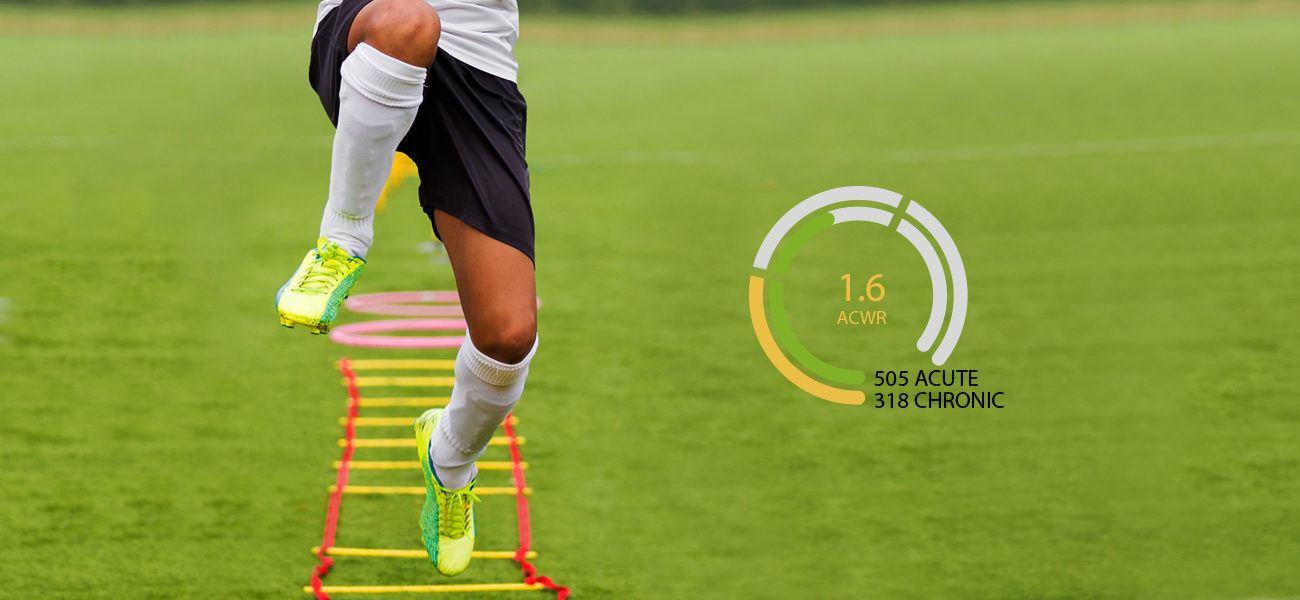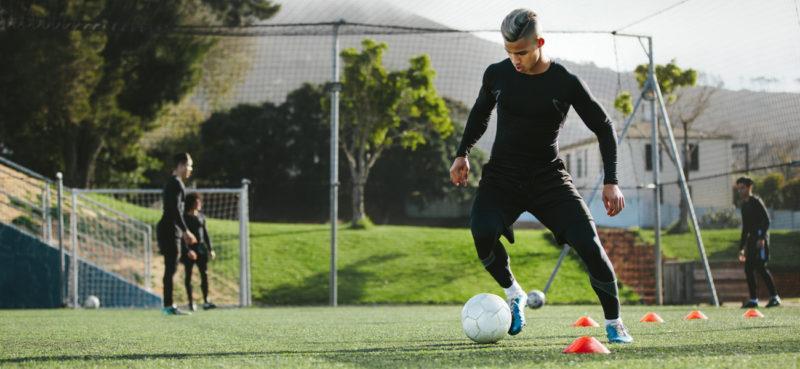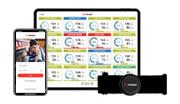
How Firstbeat Calculates Acute Training Load
Firstbeat uses TRIMP (Training Impulse) to quantify training load accumulated during a session. TRIMP considers the intensity of exercise as calculated by the heart rate (HR) reserve method and the duration of exercise.
Acute Training Load is calculated using the TRIMP metric (7-day TRIMP sum) to provide a sum of all training from the past week. It is individually scaled based on measurement history to allow for accurate results across different sports.
Get to know TRIMP in detail here
How Firstbeat Calculates Chronic Training Load
Chronic Training Load provides longer term information on an athlete’s training load over time. It shows the rolling average of acute training load over the last 28 days and is a good indication of an athlete’s fitness.
What is Acute vs Chronic Training Load?
Acute vs Chronic Training Load analyzes the balance between the athlete’s Acute (short-term) and Chronic (long-term) load. It indicates whether short-term and long-term training is in balance and alerts you to situations where the load is changing too quickly.
Interpreting Acute vs Chronic Training Load Results Using Firstbeat Sports
Interpreting Acute vs Chronic Training Load data assists with player load optimization and injury risk management. It highlights the positive and negative consequences of training and factors in the training load the athlete has been prepared for over time alongside what they have performed.
The Acute vs Chronic Training Load variable in Firstbeat Sports uses color-coded warning signals to highlight an athlete’s load situation. This helps inform decisions on athlete participation in sessions and build effective weekly training plans to optimize load throughout the season.
Acute and Chronic Training Load ranges are each color-coded as; Yellow (Low load), Green (Moderate load) and Red (High load).
These ranges are continuously scaled based on an individual athlete’s measurement history. For example, if an athlete reaches an Acute Training Load of 900 this will become their new maximum from which the three zone ranges are calibrated. This upper limit would be reduced if similar loads are not reached in subsequent training weeks, resulting in ranges automatically recalibrating to account for this. This ensures individualized results for each player and means coaches aren’t limiting someone who is physiologically capable of increasing their workload.
You are also provided with the Acute:Chronic Workload Ratio (ACWR). This information can indicate when an athlete is in a well-prepared state, or at an increased risk of getting injured. These are color-coded as follows:
Green = Good ACWR
Yellow = Moderate ACWR
Red = Poor ACWR

Three examples of the Acute vs Chronic Training Load as shown on the Firstbeat Sports dashboard. Player 3 has a high acute load, but low chronic load so is at an increased risk of injury, whilst Player 1 is in the training ‘sweet spot’ with an ACWR of 1.2.
The ‘sweet spot’ for load optimization is where Acute and Chronic load is equal and the ratio is 1.0. This indicates the athlete is in a well-prepared state as their acute training load is low (experiencing minimal ‘fatigue’) and chronic training load is high (signs of developed ‘fitness’).
According to research by Dr. Tim Gabbett, the ‘sweets spot’ ratio when the risk of injury is reduced is 0.8-1.3
<1 – Athlete in a well-prepared state
0.8-1.3 – Training ‘sweet spot’ where injury risk is reduced
>1.5 – Danger zone. More at risk of injury
>1.8 – Danger zone 2. Further increased risk of injury
Suddenly increasing training load has been associated with an increase in injuries. Piggott et al showed that when training load increased by no more than 5-10% on the previous week athletes’ risk of injury was below 10%. When training load increased by >15% on the previous week, this shot up to between 21-49%.
Monitoring the Acute vs Chronic Training Load of athletes can ensure increases in training load are introduced safely and effectively without putting athletes at greater risk of injury. Both inadequate and excessive training loads could result in increased injuries, reduced fitness and poor team performance.
You might also be interested in

Why Monitor Internal Load in Elite Sports?
A look at the what, how and why of internal load monitoring and why it should form part of your training program.

Training Loads in Mid-Major Basketball – With Henry Barrera, Liberty Men’s Basketball Ep. 3
On the line today is Henry Barrera. Henry is the Director of Performance for the Liberty Men’s Basketball program, who are heading to the NCAA Tournament for the first time since 2014 after being crowned Atlantic Sun Conference Champions in their first season in the conference.



